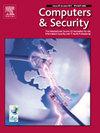Encoder decoder-based Virtual Physically Unclonable Function for Internet of Things device authentication using split-learning
IF 4.8
2区 计算机科学
Q1 COMPUTER SCIENCE, INFORMATION SYSTEMS
引用次数: 0
Abstract
Internet of Things (IoT) networks have been deployed widely making device authentication a crucial requirement that poses challenges related to security vulnerabilities, power consumption, and maintenance overheads. While current cryptographic techniques secure device communication; storing keys in Non-Volatile Memory (NVM) poses challenges for edge devices. Physically Unclonable Functions (PUFs) offer robust hardware-based authentication but introduce complexities such as hardware production and conservation expenses and susceptibility to aging effects. This paper’s main contribution is a novel scheme based on split learning, utilizing an encoder–decoder architecture at the device and server nodes, to first create a Virtual PUF (VPUF) that addresses the shortcomings of the hardware PUF and secondly perform device authentication. The proposed VPUF reduces maintenance and power demands compared to the hardware PUF while enhancing security by transmitting latent space representations of responses between the node and the server. Also, since the encoder is placed on the node, while the decoder is on the server, this approach further reduces the computational load and processing time on the resource-constrained node. The obtained results demonstrate the effectiveness of the proposed VPUF scheme in modeling the behavior of the hardware-based PUF. Additionally, we investigate the impact of Gaussian noise in the communication channel between the server and the node on the system performance. The obtained results further reveal that the achieved authentication accuracy of the proposed scheme is 100%, as measured by the validation rate of the legitimate nodes. This highlights the superior performance of the proposed scheme in emulating the capabilities of a hardware-based PUF while providing secure and efficient authentication in IoT networks.
基于编码器解码器的虚拟物理不可克隆功能,利用分裂学习实现物联网设备身份验证
物联网(IoT)网络的广泛部署使设备认证成为一项关键要求,这带来了与安全漏洞、功耗和维护开销有关的挑战。虽然目前的加密技术能确保设备通信安全,但将密钥存储在非易失性存储器(NVM)中却给边缘设备带来了挑战。物理不可克隆函数(PUF)提供了基于硬件的稳健验证,但也带来了一些复杂问题,如硬件生产和维护费用以及易受老化影响等。本文的主要贡献是基于分离学习的新方案,利用设备和服务器节点上的编码器-解码器架构,首先创建一个虚拟 PUF(VPUF),解决硬件 PUF 的缺点,其次执行设备验证。与硬件 PUF 相比,拟议的 VPUF 减少了维护和功耗需求,同时通过在节点和服务器之间传输响应的潜在空间表示来增强安全性。此外,由于编码器在节点上,而解码器在服务器上,这种方法进一步减少了资源受限节点的计算负荷和处理时间。所获得的结果证明了所提出的 VPUF 方案在模拟基于硬件的 PUF 行为方面的有效性。此外,我们还研究了服务器和节点之间通信信道中的高斯噪声对系统性能的影响。获得的结果进一步表明,根据合法节点的验证率衡量,所提出方案的验证准确率达到了 100%。这凸显了所提方案在模拟基于硬件的 PUF 功能方面的卓越性能,同时还能在物联网网络中提供安全高效的身份验证。
本文章由计算机程序翻译,如有差异,请以英文原文为准。
求助全文
约1分钟内获得全文
求助全文
来源期刊

Computers & Security
工程技术-计算机:信息系统
CiteScore
12.40
自引率
7.10%
发文量
365
审稿时长
10.7 months
期刊介绍:
Computers & Security is the most respected technical journal in the IT security field. With its high-profile editorial board and informative regular features and columns, the journal is essential reading for IT security professionals around the world.
Computers & Security provides you with a unique blend of leading edge research and sound practical management advice. It is aimed at the professional involved with computer security, audit, control and data integrity in all sectors - industry, commerce and academia. Recognized worldwide as THE primary source of reference for applied research and technical expertise it is your first step to fully secure systems.
 求助内容:
求助内容: 应助结果提醒方式:
应助结果提醒方式:


